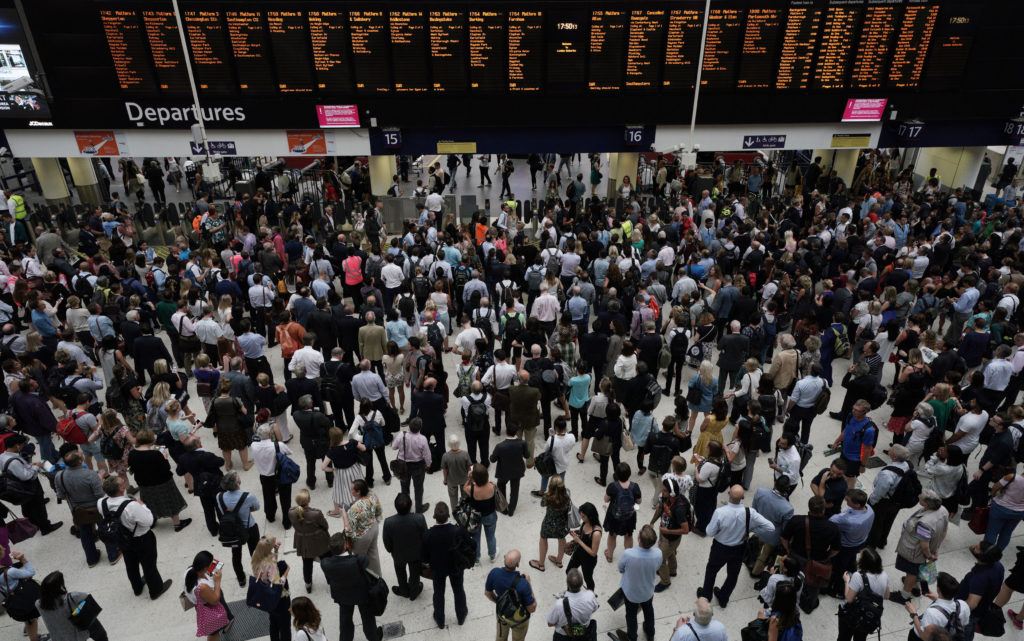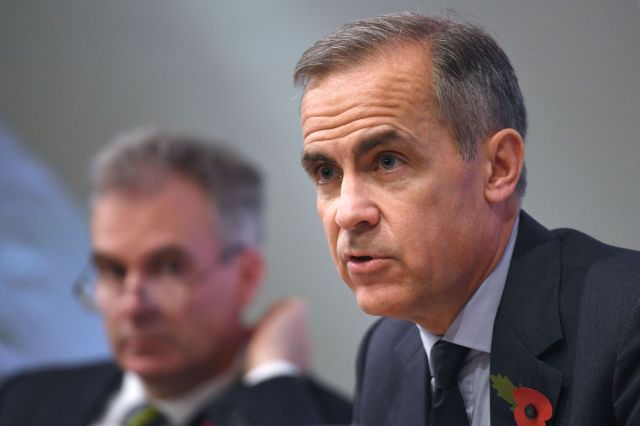The governor of the Bank of England, Mark Carney, said the UK economy has a “new lower speed limit” during the press conference to announce the interest rate increase – Stefan Rousseau/PA Wire/PA Images

“Productivity isn’t everything, but in the long run it is almost everything”. This phrase is often wrongly ascribed to former Federal Reserve Chairman Alan Greenspan. Authorship, in fact, belongs to the Nobel Laureate in Economics, Paul Krugman – who coined this pithy aphorism in his 1994 book, The Age of Diminishing Expectations.
“A country’s ability to improve its standard of living over time depends almost entirely on its ability to raise its output per worker,” argued Krugman. And he’s broadly right. That’s why the Western world has seen falling living standards over recent years, with lower income groups suffering particularly badly – a development which has upended our political culture, making it more febrile and divided. Across the ‘advanced’ nations, productivity growth has stalled – particularly in the UK.
Over the past twenty years, productivity – defined as value generated per hour worked – has slowed significantly in most developed countries. That explains why, across much of the OECD, real median disposable incomes have hardly progressed since the mid-1990s. In the US, such incomes have been trending down since 2004. In the UK, while real incomes have grown by a fifth over the last two decades, there has been a sharp deterioration in productivity, and real living standards, in the wake of the 2008 economic and financial crisis.

Between 1994 and 2007, UK productivity grew by 1.9% a year, driving up real wages and broader economic growth. Since 2008, however, the official Office for Budget Responsibility calculates productivity has risen by just 0.1% per annum. Even worse, during 2017, we’ve seen a sharp deterioration. From January to March this year, productivity in Britain fell 0.5%. During the following three months it fell again, by 0.1%.
Low productivity hits incomes and profits, undermining consumer spending and investment, so translating into lower growth. That also impacts tax receipts. As such, ‘the UK’s productivity puzzle’ is back in focus, ahead of Chancellor Philip Hammond’s annual budget statement later this month. The British economy has a “new, lower speed limit”, says Mark Carney. The Bank of England Governor acknowledges that productivity has slowed in just about every advanced economy in recent years, but insists “the slowdown has been more severe in this country than in others”.
The kind explanation of low UK productivity is that, as manufacturing has fallen from around a third of the British economy 40 years ago to around 15% today, with services expanding, the scope for productivity gains in a ‘post-industrial’ nation like the UK is simply lower. A related observation is that the British economy, particularly in recent years, has been extremely good at creating jobs.
Unemployment, at 4.3%, is at a 42-year low. Yes – France has higher productivity, but with a 10% unemployment rate. If the least productive workers are excluded from the labour market altogether, the productivity of those in work will be higher.
That’s myopic, though, given the link between the UK’s weak productivity and poor vocational education and training. For too many years, British firms have chosen to employ skilled immigrants, rather than taking the time and trouble to train existing local workforces – a trend exacerbated by the EU’s ‘freedom of movement’ rules. It’s widely recognised that unless the government responds to Brexit by seriously upgrading vocational training, and encouraging firms to do their part, UK productivity will likely remain in the doldrums.
Other factors have driven the productivity plunge that are far less widely acknowledged. One is the poor state of the UK’s transport infrastructure. Crossrail – which spans the capital from East to West – is Europe’s biggest live infrastructure project, and will bring benefits. But too many other projects are stalled, or misguided.
The proposed HS2 rail-line, for instance, is designed to shave half an hour from the London to Birmingham route, at an officially estimated cost of £42 billion. It is the wrong solution to the wrong problem. ‘Bullet trains’ get ministers and well-connected engineers excited.
Britain, though, is a small island with a few relatively large cities. What’s needed to boost productivity isn’t a bit more inter-city speed, but a solution to the now chronic overcrowding on local commuter lines – not only into London, but also Birmingham, Leeds, Manchester and Bristol, where passenger numbers have grown faster than those into and out of the capital. Of course, governments want showcase projects and ministers want ‘legacies’. But what would really lead to efficiency gains is sustained investment into the unglamorous local services that get the vast majority of train commuters across the UK to work.
A faster London-to-Birmingham train will simply draw more workers to an already over-crowded capital. Rather than spending £80 billion-plus on HS2 – which is what the eventual cost will be – the government should focus on more frequent inter-city links between our great northern cities, as part of a much bigger emphasis on cross-country train services. Channeling serious money into a pan-Northern rail line – known as ‘HS3’ – would create an alternative growth-centre to London in the North-West, doing far more to boost productivity.

Increasing the UK’s housing supply – a frequent topic of the Tarbell column – will also help boost productivity. Far too many British workers are spending hours traveling each day, which makes them less productive. The number of employees with daily commutes of two hours or more has shot up by 31% over five years from 2010, according to research by the Trades’ Union Congress.
3.7 million workers endure a daily one-way commute of two hours or longer (around 15% of the workforce). This impacts not only general well-being and family cohesion, but also productivity. If more land was made available for house-building close to employment opportunities – particularly in the UK’s big cities, where people end up commuting across a ‘green-belt’ that defined city limits many decades ago – then productivity would rise.
But perhaps the biggest reason why UK productivity has dropped since 2008 is that ultra-low interest rates mean banks have had little incentive to lend to the innovative firms, particularly small and medium-sized enterprises, that have traditionally been the seedbeds of so much UK technological ingenuity and innovation.
UK banks today are typically only interested in secured lending, such as property. More than 70% of all outstanding bank loans in Britain are linked to the purchase of a property. Given that base rates remain at 0.5pc, and remain strongly negative in real terms, banks can secure a perfectly profitable 4% spread on low-yielding property deals.
If nominal base rates were ‘normalised’, back at 3-5%, as they have typically been in recent decades, then banks would need to search for a critical mass of higher-return investments to make a decent margin, which would often involve productivity-boosting activities including the development of new and innovative products.
On top of that, low rates have also kept thousands of ‘zombie’ companies alive – firms able only to pay debt-interest, rather than clear debts themselves. Around a quarter of a million struggling UK firms are in this situation, kept on life support by unnaturally low rates. Unable to invest and expand, they’re a major reason productivity is so low – tying up resources that should be channeled into healthier firms.
“If I turn out to be particularly clear, you’ve probably misunderstood what I’ve said”. That’s one quotation that did come from Alan Greenspan. Assessing falling productivity, particularly in the UK, can feel similarly confusing. Enhanced vocational skills are obviously vital – but that’s only part of the solution. Solving the UK’s productivity puzzle means tackling a lack of ambition across transport and housing.
Above all, the solution lies in the normalisation of monetary policy – and a greater degree of competition between banks, as they vie to lend to the entrepreneurs and firms that are the ultimate source of gains in national productivity, income and wealth.










Join the discussion
Join like minded readers that support our journalism by becoming a paid subscriber
To join the discussion in the comments, become a paid subscriber.
Join like minded readers that support our journalism, read unlimited articles and enjoy other subscriber-only benefits.
Subscribe